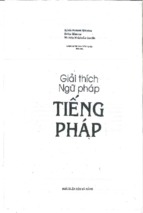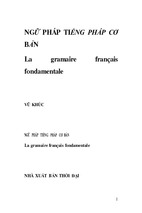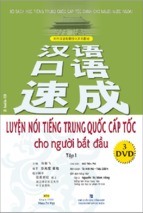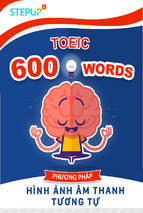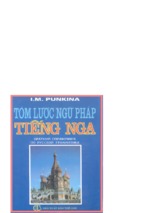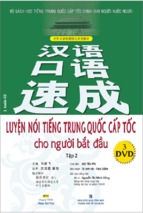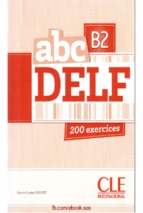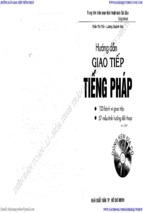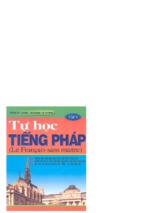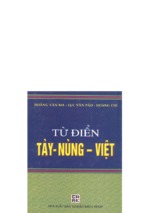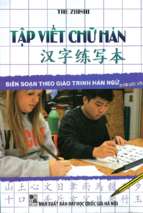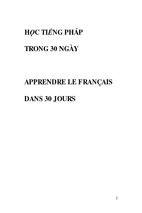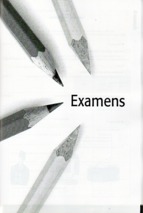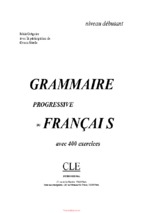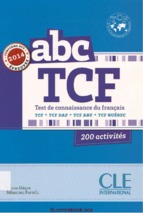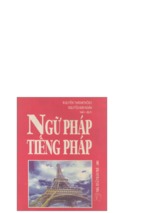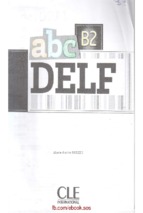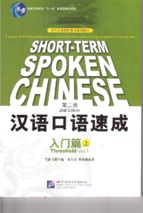SAMPLER PACK
S
C
MODERN CHINESE
FIRST EDITION
BEGINNER COLLEGE LEVEL CURRICULUM
MODERN CHINESE SAMPLER PACK
NOT FOR SALE
Project Director:
Editorial Consultant:
Project Manager:
Assistant Editors:
James P. Lin
Li-Hsiang Yu Shen
Angel Yeh
Sue-Ann Ma and Christopher Peacock
Curriculum Advisors:
Executive Publisher:
Norman Masuda and Rebecca Starr
Chi-Kuo Shen
Lauren Chen, Cheuk-Yue Fung,
Tiantian Gao, Ying Jin,
Lillian Klemp, Sue-Ann Ma,
Christopher Peacock, and Bin Yan
Better World Ltd
Illustrations:
© 2012 BETTER CHINESE LLC (a Better World LTD company)
TEXTBOOK 1A ISBN: 978-1-60603-481-1
TEXTBOOK 1B ISBN: 978-1-60603-482-8
WORKBOOK 1A ISBN: 978-1-60603-482-8
WORKBOOK 1B ISBN: 978-1-60603-485-9
ONLINE TEACHER’S GUIDE 1A ISBN: 978-1-60603-516-0
ONLINE TEACHER’S GUIDE 1B ISBN: 978-1-60603-519-1
ALL RIGHTS RESERVED. No part of this work covered by the copyright hereon may be reproduced or used in any form
or by any means – graphic, electronic, or mechanical, including photocopying, recording, taping, web distribution, information storage and retrieval systems, or in any other manner – without the written permission of the publisher.
Photos used with permission from Thinkstock Photos.
For more information about our products, contact us at:
Better Chinese, United States
640 Waverley Street
Palo Alto, CA 94301
Tel: 888-384-0902
Fax: +1-(702)442-7968
Email:
[email protected]
Table of Contents
Modern Chinese Program Description
...................................... 1
Component Features
........................................................ 3
Scope and Sequence
........................................................ 8
Sample Lessons
............................................................ 16
Volume 1 Unit 4
Food
............................................. 16
a. Textbook
.............................................. 17
b. Workbook ............................................. 50
c. Teacher's Guide ........................................ 77
Volume 2 Unit 4
Shopping
a. Textbook
.........................................111
..............................................112
b. Workbook .............................................153
Sample Online Components
................................................187
FOREWORD
It has been a great start for Modern Chinese! We are both humbled and excited to hear so many positive things
about the program since its inception. As an example of the warm welcome we have received, Professor
Hong Jiang at Northwestern University shared with us, “The students can speak freely about their daily lives,
Modern
Chinese.
In this second year program for Modern Chinese, we continued our tradition of research, working with both
ensure engaging, relevant, and effective curricula content.
The characters flourish in this installment with existing and new themes, allowing students to discuss and
articulate language experiences that are important to them, such as employment and current events, in more
depth. We introduce students to new narration and paragraph formats in addition to existing story dialogues.
For practice exercises, we focus on authentic applications of the language so that students can apply them in
real scenarios, such as planning a trip and renting an apartment, within a cultural context.
Adding to the cultural context, the curriculum systematically introduces idiomatic expressions to help students
understand and authentically communicate with Chinese people. The number of vocabulary words have been
increased per lesson but the percentage of new individual Chinese characters has been kept constant, thereby
alleviating the challenge of new vocabulary acquisition. Students will explore new grammar points that allow
their own opinions.
We want to thank everyone who took this journey with us: our Executive Publisher, Chi-Kuo Shen, who
curated the Cultural Spotlights; Chief Educator Li-Hsiang Shen for her editorial overview; Norman Masuda for
his insights in creating authentic activities; and Professor Rebecca Starr for her invaluable insights as a linguist
and providing a non-native learner’s perspective. We would like to express our gratitude to the professors who
provided feedback through numerous rounds of reviews: Hong Zeng, Michelle DiBello, Youping Zhang, and
Chao Fen Sun of Stanford University; Lilly Cheng of San Diego State University; and Christopher Lupke
of Washington State University. We also wish to thank our advisory board professors for their insightful and
constructive feedback: Hong Jiang of Northwestern University; Yujie Ge of Santa Clara University; Cynthia
Hsien Shen of University of Florida; Li Ma of Florida International University; Xiaojun Wang of Western
Michigan University; and Tong Chen of Massachusetts Institute of Technology. Most importantly, Better
Chinese would like to recognize the core Modern Chinese team: Project Manager, Angel Yeh for her creative
story-telling abilities and critical eye in overseeing every detail of the Modern Chinese project; Lauren Chen,
Cheuk-Yue Fung, Tiantian Gao, Roger Hsieh, Ying Jin, Lillian Klemp, Sue-Ann Ma, Christopher Peacock, and
Bin Yan.
Finalizing Modern Chinese
the program continuously with feedback from you, as students or as teachers. I want to thank you for giving
us the courage to make Modern Chinese and for helping us make learning Chinese more approachable and
relevant.
James P. Lin
Project Director
July 2013
1
Foreword
MODERN CHINESE
PROGRAM DESCRIPTION
Modern Chinese is designed for beginner college students with the aim of making learning Chinese language and culture approachable, engaging, and relevant. This colorfully illustrated curriculum contains 32
themes such as , , , , , , , and that help students to successfully communicate the “what’s
and how’s” of life in Chinese.
Modern Chinese adheres to the National Standards for Foreign Language Learning — the Five C’s:
Communication, Cultures, Connections, Comparisons, and Communities. In addition, our lessons build
vocabulary and grammar structures upon each other in a spiral-up approach that helps students build a
strong language foundation. Our inquiry-based and story-centered design also ensures that our studentcentric lessons prepare students for real life communication.
Our editorial team has created a framework that makes learning the Chinese language inviting without
losing the rich, cultural aspects of the language. Students are immediately attracted to the colorful illustrations and lesson content is broken down into easily digestible parts. To avoid treating Chinese like
Romance languages, our Structure Notes section is designed with students in mind, teaching them “how
to do” something in Chinese, rather than focusing on “grammar.” In every lesson, we also include communicative activities to facilitate interactions between students, either with a partner or within a group.
Additional cultural references and videos serve to build a wider understanding of the Chinese culture.
In our classrooms, we encourage teachers to foster an environment of exploration, provocation, repetition,
mastery, friendship, interaction, and collaboration. Our program design creates a culture-rich, activity-rich
curriculum built on stories and provides a multi-channeled learning environment. We cultivate a desire
within students for meaningful and interesting communication, emphasizing the importance of “here and
now.” With a wide range of speech events, such as role-playing, drama, activities, and games, we form a
foundation for Mandarin acquisition.
Furthermore, we encourage learning beyond the classroom with a variety of online resources for students
that do not have access to a Mandarin language environment. These additional online activities, tools and
resources enable students to forge a deeper connection to the Chinese language and culture.
With proven pedagogies, advanced technologies and careful observations of student needs and wants, we
hope the Modern Chinese program can help instructors create a fun and effective learning environment
for students, making Chinese learning truly modern.
2
Program Description
SERIES COMPONENTS*
PROGRAM COMPONENTS*
Textbooks with Audio and Online Resources
Workbooks
Online Workbooks
Online Teacher’s Guides
Assessment
Textbook
Workbook
Online Workbook
Online Teacher’s Guide
Assessment
1A 1B 2A 2B
1A 1B 2A 2B
1A 1B 2A 2B
1A 1B 2A 2B
1A 1B 2A 2B
* The numeral 1 denotes the target year in a 2-year college setting. Instructors can choose to use only one volume per year.
COMPONENT FEATURES
TEXTBOOK
Modern Chinese is organized by units, each representing a particular theme. In each unit, there are two lessons
presenting different scenarios. The organization of each lesson is as follows:
Lesson Story
Lesson Text
Vocabulary
Related words and phrases that are not in the Lesson Text. Students are required
to learn these words as core vocabulary. They will be used in the Structure Notes and Practice sections.
Optional related words and phrases that are not in the Lesson Text. Students are
not required to learn these words. They can be used for extended learning.
Pronunciation Notes
Details on the pronunciation of lesson words or phrases that are exceptions to general Chinese
pronunciation rules.
Language Notes
Language and culture notes pertaining to the lesson theme and vocabulary.
3
Program Description
Structure Notes
Grammar explanations, examples, and practices.
Practice
Individual, partner, and group speaking exercises through conversations, presentations,
and audio recordings.
Stroke order is displayed for characters that students are required to be able to
write for the lesson. These are the most frequently-used characters. Exercises that involve writing and
typing Chinese characters are also provided.
Reading comprehension sections contain vocabulary from the Lesson Vocabulary and
Required Vocabulary sections.
Cultural Spotlight
Grammar explanations, examples, and practices.
Text in English
What Can You Do
Summary of interpretive, interpersonal, and presentational communication skills achieved by the student.
Unit Review
Found at the end of the second lesson per unit, this is a summary of all vocabulary and structure notes
learned in the unit. To assess comprehension of the material from the two lessons, a short list of role-play
suggestions are provided for extended communicative practice.
WORKBOOK
The Modern Chinese workbook is designed to create opportunities for students to practice individual language
skills in targeted settings as well as in holistic and applied ways. Please visit our website, http://college.betterchitools, further cultural information, and additional character writing materials. The workbook is comprised of the
following sections:
Vocabulary Review
Various exercises aim to help students absorb the new vocabulary introduced in each lesson. Exercises
focus on character recognition and pinyin accuracy.
4
Program Description
Character Writing Practice
Characters highlighted in the Practice section of the textbook are revisited with ample space for writing
practice. Complete stroke-order sequence diagrams and radical information are also included. For further
character writing practice, please visit the website to download additional character writing sheets.
Listening Comprehension
This section offers an extra opportunity to gain exposure to Chinese sentences and conversations outside
of the classroom. Students answer a variety of comprehension questions after listening to short dialogues
Speaking Practice
To encourage active production of Chinese sentences, this section prompts students to make audio
recordings that role-play everyday situations they may encounter. Students can also visit our website to
use our online tools to record their compositions and send them to their teacher for review. Alternatively,
teachers may want to use this section in the classroom for additional speaking practice.
Structure Review
Each section provides the Structure Note formula introduced in the lesson and also exercises focusing on
mastery of the grammar.
Reading Comprehension
Lesson Vocabulary and Structure Notes are reviewed in passages, narratives, and other authentic
materials. Questions are provided to assess students’ comprehension of the material.
Writing Practice
This section provides another opportunity for students to practice writing Chinese using authentic
materials. Students must draw from previously learned vocabulary and Structure Notes to compose short
essays based on prompts relevant to the theme of the lesson.
TEACHER’S GUIDE
The Teacher’s Guide is designed to provide instructors with additional information on how to lead students through
Modern Chinese, our unique program for college students and adult learners. For ease of reference, the Teacher’s
Guide is in a wraparound format: each page is comprised of annotations below and to the side of the relevant page in
the textbook. The following are the different kinds of notes you will encounter in the Teacher’s Guide:
Objective
5
Program Description
Teaching Pointer
Provides tips on how to teach grammar, vocabulary, language notes, etc., and gives additional relevant
information not included in the textbook.
Checkpoint
Provides suggestions for appropriate exercises to test students on their understanding of the material.
Online Link
Highlights sections of the textbook that can be augmented with material and tools from the Modern
Chinese website.
Discussion
Offers appropriate discussion topics on themes covered in the Language Notes and Cultural Spotlight
sections.
To help instructors implement a standardized teaching program in the classroom, the Teacher’s Guide draws
attention to the use of each of the ACTFL ‘C’s’. National Standards markers accompany Teaching Pointers,
ONLINE COMPONENTS
Each Modern Chinese lesson is fully-supported by online modules found at http://college.betterchinese.com.
Authorization codes to access the online features are found in the back of each purchased textbook and/or
workbook. Complimentary online modules that accompany the textbook include:
Lesson Animation
classroom.
Lesson Text and Vocabulary Audio
Online Resources
differentiated instruction.
Modern Chinese also offers an online workbook, which offers assorted practices from the physical
workbook with automatic-grading features.
6
Program Description
VOLUME 2 CHANGES AND PROGRESSIONS
We are excited about Modern Chinese, Volume 2. Building on the strengths of Volume 1, the intermediatelevel text incorporates new features aimed at guiding students through the next stage of Chinese language
acquisition, while telling the story of our characters as they come to discover themselves. The second volume contains the same overarching design, focusing on engaging, relevant, and approachable content, but
new elements provide students with the confidence to apply the language in a more culturally authentic
manner.
In Modern Chinese, Volume 2, the program is different in that the lesson texts include character dialogues
as well as narratives and practical correspondence. The program also deepens language-learning at this level
through the introduction of authentic material and real-life exercises. Students learn how to apply what they
learn in actual scenarios, such as planning a trip and renting an apartment.
The program is still organized into themes: new themes, such as , , , , , , , and
were
selected as relevant topics for students to communicate effectively and in-context. For themes already introduced in Volume 1, the text delves deeper into the subject at-hand. The text also systematically introduces
well-known Chinese expressions, such as idioms, to help students understand everyday communication
during exchanges with native Chinese speakers. The number of vocabulary has been increased per lesson,
but scaffolding rates remain consistent with the prior volume to foster high retention rates and alleviate the
challenge of new vocabulary acquisition. Students will explore new grammar points that will make them
We look forward to hearing your feedback. We hope you and your students will enjoy this second volume of
the Modern Chinese program.
7
Program Description
MODERN CHINESE
Units
Communication Goals
Structure Notes
1. Understand the 4 Chinese tones
2. Learn the Chinese phonetic system,
pinyin
3. Understand the rules of Chinese
stroke order
Prelude:
The Chinese
Language
UNIT 1
Me
Count from 1 to 99
1. Use an adjective phrase to describe
a subject
2. Use to convert a pronoun or noun
(people only) to its plural form
3. Use to express “also”
4. Use to turn a statement into a
question
5. Use to ask “What about . . .?”
6. Use to state one’s name
7. Use
to ask “what?” questions
8. Use
to ask about somone’s age
9. Add after a number to state
one’s age
10. Use to indicate equivalency
11. Use
to ask about nationality
and country + to state
nationality
12. Use to negate a verb
13. Use Verb + + Verb to form
14. Use Verb or
UNIT 2
Family
8
Scope and Sequence
Scope & Sequence
+ Verb to answer
1. Use to express possession
2. Use
to express “not have”
3. Use
to form a “have or not
have” question
4. Use
to ask what one has
5. Use to indicate possession
6. Use number + measure word to
quantify a noun
7. Use + measure word to ask how
many and number + measure word
to answer
8. Use or to express “this” or
“that”
9. Use to ask “who?”
10. Use to express “also”
11. Use to state what one knows
how to do
12. Use
to ask whether or not
one knows how to do something
13. Use to express “only”
Language Notes & Cultural
Spotlights
Units
Communication Goals
UNIT 3
Time
UNIT 4
Food
UNIT 5
Daily Lives
9
Scope & Sequence
Structure Notes
1. Use to indicate the possibility of
an action taking place in the future
2. Use
to ask “when”
3. Use
to ask “what day of the
week” and
+ number to state
the day of the week
4. Use
to discuss time
5. Use
to express “almost”
6. Use
( ) to express “not yet”
or “still have not”
7. Use to make a suggestion
8. Use to ask “what month” and
“what day”
9. Use to mean “both” or “all”
10. Use to indicate a change of state
or situation
11. Use the verb in the context of gift
giving
12. Use to modify nouns
1. Use to indicate a desired action
2. Use to mean “to give”
3. Use
to express liking
something or someone
4. Use Verb + + Verb with
5. Use ( ) to mean “Well then” or
“In that case”
6. Use + Verb to form a compound
adjective
7. Use
to ask for an opinion of
something
8. Use
to describe an
exaggerated attribute
9. Use to indicate desire
10. Use
and
to ask
questions and give explanations
respectively
11. Use
to express the brevity of
an action
1. Use to indicate location
2. Use as a verb complement
3. Use
to ask “where”
4. Use to talk about future events
5. Use
to express doing
things together
6. Use
to express permission
7. Use with an action verb to
indicate the location of an activity
8. Use as a resultative complement
to indicate completion of an action
9. Use or and a resultative
complement to indicate whether it
is possible or not possible to reach
a result
Language Notes & Cultural
Spotlights
Units
Communication Goals
Structure Notes
10. Use
to express likelihood
11. Use completion to describe
completed actions
12. Use to indicate “right” or
“precisely”
UNIT 6
Shopping
UNIT 7
Travel &
Navigation
10
Scope & Sequence
1. Use to express existence rather
than possession
2. Use to express “must”
3. Use as the preposition “to”
4. Use
to ask “how many” or
“how much”
5. Use Adjectives with ( ) ( ) to
express “a little more”
6. Use
... to express a
suggested alternative
7. Use to indicate a repeating
action
8. Use
to express
causal relationships
9. Use
to say “need not”
10. Use
or
to intensify
adjectives
11. Use Verb +
completed actions
12. Use
to express “already”
13. Use
(
)
to say “if . . .
then . . .”
14. Use ( )
or questions
1. Use
to create “when”
expressions
2. Use to indicate an action
occurring later than anticipated
3. Use with a place word to
indicate origin
4. Use
to emphasize
the time, locale, or manner of a
completed action
5. Use
to mean “take”
6. Use to express location relative
to a reference point
7. Use with place words to indicate
destination
8. Use
to ask how something is
done
9. Use to indicate directional
movement
10. Use
,
,
to indicate
a sequence of events
Language Notes & Cultural
Spotlights
Units
Communication Goals
UNIT 8
Academics
Structure Notes
1. Use as a resultative complement
to indicate ability to understand
2. Use or to express doing an
activity more or less often
3. Use
to indicate the best course
of action among limited options
4. Use Verb + to describe
completed actions
5. Use
to express “after doing
something”
6. Use Verb + to describe a
sequence of events
7. Use to indicate an action
8. Use
to ask “how come”
questions
9. Use
/
to express
incredulity or amazement
regarding a situation
10. Use
to express “as soon
as A, B”
11. Use
to express subjective
opinions
12. Use
with adjectives to
compare qualities
13. Use to express ordinal numbers
14. Use ( )
( ) to indicate
ongoing actions
UNIT 9
Fashion
11
Scope & Sequence
1. Use
to express choices and
options
2. Use / +
to express a
subjective impression
3. Use to make comparisons
4. Use to say “even more”
5. Use ( ) ( ) to describe small
differences
6. Use
to express “both . . .
and . . .”
7. Use
(Adjective) to
express sameness
8. Use Verb Verb to describe casual
or brief activities
9. Use to express superlatives
10. Use reduplication to intensify
adjectives or adverbs
11. Use Verb reduplication to describe
casual or brief activities
12. Use to mean “and see”
13. Use ( ) ( ) to express
“somewhat”
14. Use
Language Notes & Cultural
Spotlights
Units
Communication Goals
UNIT 10
Hobbies &
Activities
UNIT 11
Relationships
& People
UNIT 12
Medicine
12
Scope & Sequence
Structure Notes
1. Use
to describe
simultaneous actions
2. Use
to mean “any”
4. Use
to mean “some”
5. Use
to express
interest in something
6. Use ( )to express “often”
7. Use to describe ability
8. Use name +
to refer to a group
of people
9. Use to describe the manner of
actions
10. Use
to express “every”
11. Use time periods to indicate
duration
12. Use multiple numbers to estimate
amounts
13. Use
? to ask a rhetorical
question
14. Use as the preposition “to,
towards”
1. Use to indicate degree or result
2. Use to express number of times
3. Use to express to “let” or “make”
someone do something
4. Use
to describe keeping
something in mind
5. Use to form the passive voice
6. Use
to express “constantly”
7. Use Verb + to express a past
experience
1. Use
to make suggestions
2. Use to express bringing objects or
people
3. Use noun or measure word
reduplication to express “every”
4. Use name/pronoun +
to talk
about someone’s location or home
5. Use to express the manner in
which an action is performed
6. Use to mean “for”
7. Use as a resultative complement
to describe a properly completed
action
8. Use
to say “again”
Language Notes & Cultural
Spotlights
Units
Communication Goals
Structure Notes
1. Use
to introduce an
unexpected event
2. Use
to express “no wonder”
3. Use
to ask “what kind?”
4. Use
to express “not
only…but also…”
5. Use
to express
“although . . . however . . .”
6. Use
to express length of
time
7. Use
to express a desire
8. Use
as an intensifier
9. Use
to express relevance
to a subject
10. Use Noun +
/
to say “this/
that type of . . .”
UNIT 13
Business
guanxi
UNIT 14
Festivals
13
Scope & Sequence
1. Use
to describe the
means of doing something
2. Use to indicate an ongoing
action
3. Use
to say “be about to”
4. Use
to express “when the
time comes”
5. Use to express “resemble” or “is
like”
6. Use
to mean “increasingly”
7. Use
to say “for example”
8. Use
to say “even . . .”
Language Notes & Cultural
Spotlights
guanxi
Units
Communication Goals
UNIT 15
Chinese
Ways
Structure Notes
1. Use
to make requests
2. Use before verbs to express
commencing an activity
3. Use
to say “or else” or
“otherwise”
4. Use
to express “as it happens”;
“happen to . . .”
5. Use or
to express “just now”
6. Use nouns with
7. Use
( ) to say “for instance”
and give examples
to describe an action
continuing up to the present
UNIT 16
Technology &
Modern China
14
Scope & Sequence
1. Use
to say “besides . . .”
2. Use question words with to
express “any” or “every”
3. Use
to refer to oneself or
another
4. Use to express “at the point
when/by the time”
5. Use Verb Phrase
Someone /
to express doing something to show
someone else
6. Use to express keeping someone
company
7. Use
to stress that
something will be the case
8. Use to mean “extremely” or “to
death”
Language Notes & Cultural
Spotlights
MODERN CHINESE VOLUME 2
Scope and Sequence
Units
Communication Goals
UNIT 1
Weather
UNIT 2
Academics
15
Scope & Sequence
Structure Notes
1. Use to emphasize a
small number or amount.
2. Use
after a number to
make an estimate.
3. Use
to express
possibility or uncertainty.
4. Use to mean each or
different.
5. Use
to strengthen an
adjective.
6. Use
to mean “I’ve
heard that.”
7. Use A B with an
adjective and a quantity
to specify an amount in
comparison.
8. Use
to express much
more.
9. Use
to express “as it
turns out.”
1. Use
B
to
indicate A is the only
condition necessary for B
to occur.
2. Use
to explain
the purpose of doing
something.
3. Use
to say “but” to
indicate a contrast to the
previous statement.
4. Use
to describe
transformation in state or
from one thing to another.
5. Use
to indicate “and
so on” at the end of a list.
6. Use
to
formally indicate when
something happened.
7. Use
to indicate a
reason or cause.
8. Use to join two nouns in
formal writing.
Language Notes & Cultural
Spotlights
Units
Communication Goals
1. Use
to bring up
additional points.
2. Use
to say “indeed” or
“really.”
3. Use
to
emphasize “not at all.”
4. Use
to express doubt over
an unfortunate situation.
5. Use
to
indicate that things are within
or outside of scope.
6. Use
to express pity at an
unfortunate situation.
7. Use
to list
included items or examples
within a category.
8. Use
to express
satisfaction or dissatisfaction
with something.
UNIT 3
Housing
UNIT 4
Shopping
Express apologies and
frustrations.
of terms related to a store’s
return policy.
UNIT 5
Hobbies
16
Structure Notes
Scope & Sequence
1. Use A
B to indicate A is
not as good as B.
2. Use
to mean “also” to
connect words or clauses in
formal contexts.
3. Use A B as a formal way
to exprss “both A and B.”
4. Use
to
emphasize superlatives.
5. Use
to express
ability or inability to complete
certain actions.
6. Use
to
describe categories using
comparisons.
7. Use
to say “actually.”
8. Use
to express
that something does not
matter.
1. Use
to talk about
additional items.
2. Use
to
minimize the significance of
something.
3. Use
to indicate a preferred
alternative.
4. Use
to formally
express someone’s opinion
5. Use
to indicate a place of
origin.
Language Notes & Cultural
Spotlights
Units
Communication Goals
Structure Notes
Language Notes & Cultural
Spotlights
6. Use
to express
obtaining physical objects
and
for receiving
abstract concepts.
7. Use to express making
someone feel a certain way.
8. Use
to introduce
topics.
1. Use
to express mistaken
belief.
2. Use to indicate an action
UNIT 6
Cuisine
Talk about necessary
ingredients for making a
dish.
expiration dates of food.
to make compliments about
food.
in formal contexts.
3. Use
to express
“no matter what” something
is always the case.
4. Use
to mean “really” and
“honestly.”
5. Use
to say “hence” or
“thus.”
6. Use
to say “nearly.”
7. Use
to indicate that
something happened as
expected.
8. Use
to describe rare
situations and opportunities.
of dishes.
UNIT 7
Emergencies
1. Use
to say “completely.”
2. Use to emphasize a
negative contrast.
3. Use
to say “therefore.”
4. Use
to
emphatically state “never
ever again.”
5. Use
to say “with regard
to” a topic.
6. Use
to introduce
additional points.
7. Use to indicate the purpose
of an action.
8. Use
to indicate
“ever since” a certain time in
the past.
:
Scope & Sequence
17

